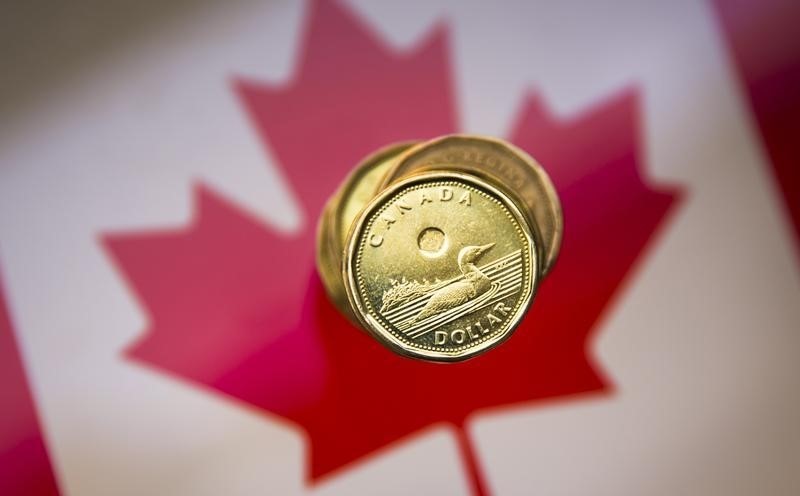* Canadian dollar at C$1.3825, or 72.33 U.S. cents
* Bond prices mixed across the maturity curve
By Fergal Smith
TORONTO, Feb 19 (Reuters) - The Canadian dollar weakened
against its U.S. counterpart on Friday as crude oil prices
tumbled and domestic data showed a sharp drop in retail sales
but a jump in inflationary pressures.
The mixed economic data suggested a combination of weak
growth and growing inflationary pressures, said Paul Ferley,
assistant chief economist with the Royal Bank of Canada.
The implied probability of a rate cut by the end of 2016
dipped briefly before returning to 87 percent BOCWATCH .
Investors are now focusing on the likelihood that the new
Liberal government's first budget next month will contain
significant fiscal stimulus.
"The markets are still being too aggressive in pricing Bank
(of Canada) easing over the course of the year," said Derek
Holt, vice president of economics at Scotiabank.
Oil prices fell on Friday as talk this week of a coordinated
plan by producers to freeze output levels was offset by a record
build in U.S. crude inventories. O/R
U.S. crude CLc1 dropped 3.18 percent to $29.79 a barrel.
A sell-off in global stocks added to pressure on
commodity-linked currencies including the Canadian dollar as
worries about the global economic outlook returned to the
forefront.
At 9:33 a.m. EST (1433 GMT), the Canadian dollar CAD=D4
was trading at C$1.3825 to the greenback, or 72.33 U.S. cents,
weaker than Thursday's official close of C$1.3749, or 72.73 U.S.
cents.
The currency's strongest level of the session was C$1.3715,
while its weakest level was C$1.3846.
Canadian retail sales fell 2.2 percent in December after
rising 1.7 percent in November as unseasonably warm weather cut
into seasonal purchases. It was the largest such decline since
April 2010 and far exceeded the 0.6 percent drop predicted by
analysts in a Reuters poll.
The annual inflation rate accelerated in January to its
highest level since November 2014, reaching the Bank of Canada's
2 percent target, lifted by food prices and the first increase
in the cost of gasoline in over a year.
"Inflation is not anywhere near as light as the market is
pricing on the breakevens," said Scotiabank's Holt.
Canadian government bond prices were mixed across the
maturity curve, with the two-year CA2YT=RR price down 2.5
Canadian cents to yield 0.446 percent and the benchmark 10-year
CA10YT=RR flat to yield 1.111 percent.
The Canada-U.S. two-year bond spread was 3.1 basis points
more negative at -30.6 basis points as Treasuries underperformed
after an uptick in U.S. price pressures that could allow the
Federal Reserve to gradually raise interest rates this year.
